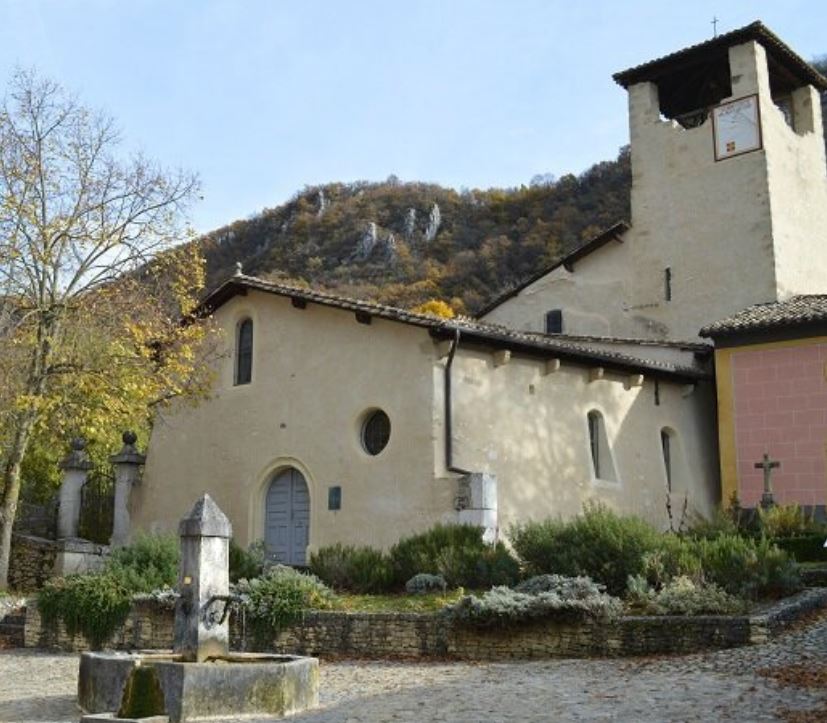L’église Saint-Martin se trouve dans un village, lui-même nommé Saint-Martin, au sud-est d’Hostun (la commune est un regroupement de deux villages, Saint-Martin et Saint-Maurice).
L’église date du XIe siècle, mais la nef et la façade ont été remaniées aux XVe et XVIe siècles. Son chevet est plat. Une chapelle Saint-Antoine est ajoutée au XVIIe siècle et deux autres au nord de la nef sont construites au XVIIIe siècle, en même temps qu’un bas-côté au sud.
Elle est également composée d’un prieuré datant de 1249, propriété de l’abbaye de La Chaise-Dieu. Transformé en presbytère à la fin du XVIIe siècle, il le restera jusqu’en 1917. L’ensemble jouxte l’ancien cimetière où a été découverte une nécropole antique et médiévale.
Un légende locale relate que saint Martin y aurait séjourné et y aurait affronté le diable dans la combe de Laya, et qu’il l’aurait vaincu grâce à sa « fourquette », qui serait encore plantée dans le rocher.
L’église est inscrite sur l’inventaire supplémentaire des Monuments Historiques depuis 1978. PA00116968
The church of Saint-Martin is located in a village, itself named Saint-Martin, to the south-east of Hostun (the commune is a grouping of two villages, Saint-Martin and Saint-Maurice).
The church dates from the 11th century, but the nave and the façade were reworked in the 15th and 16th centuries. Its chevet is flat. A chapel of Saint Anthony was added in the 17th century and two others to the north of the nave were built in the 18th century, along with a side aisle to the south.
It also includes a priory dating from 1249, owned by the abbey of La Chaise-Dieu. Transformed into a presbytery at the end of the 17th century, it remained so until 1917. The complex is adjacent to the old cemetery where an ancient and medieval necropolis was discovered.
A local legend relates that Saint Martin stayed here and confronted the devil in the combe de Laya, and that he defeated him with his « fourquette », which is still planted in the rock.
The church has been listed on the supplementary inventory of historical monuments since 1978. PA00116968

 "/>
"/>